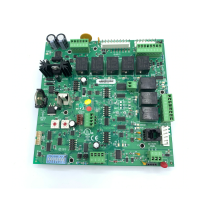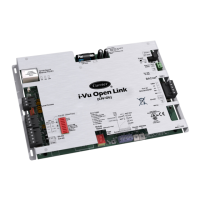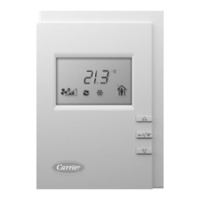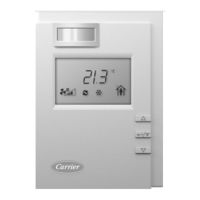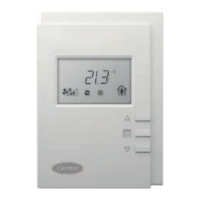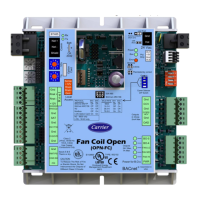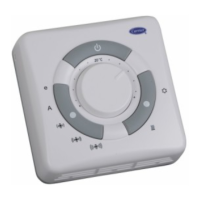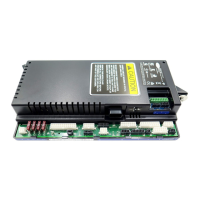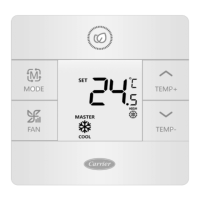Sequence of Operation
RTU Open v3 CARRIER CORPORATION ©2019
Installation and Start-up Guide All rights reserved
56
Outdoor Air Quality Sensor
– The RTU Open generates an
Outdoor Air Quality Sensor
alarm if the mA input at the
associated channel falls below 3.5 mA or rises above 21 mA. For network sensors, the controller is no longer
receiving a value from the network. Cooling, heating, and supply fan operation continues. However, the controller’s
IAQ control function uses 400ppm as the fixed outdoor air CO
2
level until the fault condition is corrected.
– The RTU Open generates this alarm when an open circuit is detected at Input 11 and the RTU
Open
>
>
>
is set to T56. Note that only
an open circuit results in an alarm. A short across this input offsets the setpoints negatively by the amount
configured in the
>
Setpoint Adjustment Range
.
- The RTU Open generates this alarm when any two of the
>
,
,
or
are configured identically. Neither input may work reliably and downstream control may be
affected, depending on the function duplicated. The alarm clears and normal control is restored when the input
function duplication is corrected.
Analog Input Configuration
- The RTU Open generates this alarm when the
>
and
are configured identically. Neither input may work reliably and downstream control may be affected,
depending on the function duplicated. The alarm clears and normal control is restored when the input function
duplication is corrected.
- The RTU Open generates a this alarm when the accumulated runtime exceeds the
>
Supply Fan Service Alarm Timer
value (when not set to 0). This alarm is most commonly used to
indicate an equipment maintenance interval is due. The supply fan runtime accumulator may be reset by setting
the
>
Reset Supply Fan Runtime Alarm
to
, and then back to
– acknowledging each
selection by clicking the
button when it appears. Setting
>
value
to
disables the supply fan runtime alarm function.
- The RTU Open generates this alarm when the accumulated runtime exceeds the
>
Compressor 1 Service Alarm Timer
value (when not set to
). This alarm is most commonly used
to indicate an equipment maintenance interval is due. The
accumulator may be reset by
setting the
>
Reset Comp 1 Runtime Alarm
to
, and then back to
– acknowledging each
selection by clicking the
button when it appears. Setting
>
Compressor 1 Service Timer
value to
disables the
alarm function.
- The RTU Open generates this alarm when the accumulated runtime exceeds the
>
Compressor 2 Service Alarm Time
r value (when not set to
). This alarm is most commonly used
to indicate an equipment maintenance interval is due. The Compressor 2 runtime accumulator may be reset by
setting the
>
Reset Comp 2 Runtime Alarm
to
, and then back to
– acknowledging each
selection by clicking the
button when it appears. Setting
>
Compressor 2 Service Timer
value to
disables the Compressor 2 runtime alarm function. Note that this function is unavailable if the
>
value is not set to
.
- An RTU Open may act as an air source in a zoned system. Carrier systems use a function
called Linkage™ to pass data between a master zone and its air source over an MS/TP network connection. When
the RTU Open is part of a linked system, it will indicate an airside linkage alarm if it loses communications with its
linkage master or if it receives data from more than 1 master zone.
The RTU Open may serve as an air source to an Open Variable Volume Terminal (VVT) system. When the RTU Open
is part of a VVT system and the controllers are wired together to form a network, the controllers may use a method
of communication known as Linkage™. Linkage is a method by which an air source and its subordinate zone
terminals exchange data to form a coordinated HVAC system. The system's air source controller, zone controllers,
and bypass controller are linked so that their data exchange can be managed by one zone controller configured as
the VVT Master.

